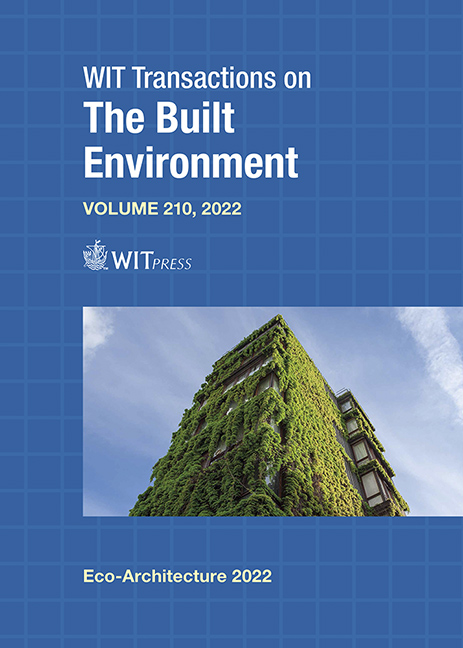HEALTHY BUILDINGS: A COMBINATION OF NATURE AND TECHNOLOGY CAN SECURE A SUSTAINABLE FUTURE
Price
Free (open access)
Transaction
Volume
210
Pages
12
Page Range
237 - 248
Published
2022
Paper DOI
10.2495/ARC220201
Copyright
Author(s)
BRANDON FUENTES
Abstract
Can buildings be designed to provide people who work in close proximity to each other with physical and emotional comfort or safety, while minimizing the risk of increased viral infection? COVID-19 had a major impact on our country with increased infection rates/deaths, mask mandates, and building occupancy limitations. With the vaccine, mandates were relaxed, including building occupancy levels. Despite this progress, many people are still anxious to work in close proximity to each other in public buildings. This paper seeks to address how healthy building ideals can set the precedent for future public buildings. Healthy buildings are key to bringing back full access to positive communal interaction. Healthy buildings provide for human comfort via advanced building systems, sustainable design thinking, and the utilization low emissive natural materials. Technical innovation and mechanical stability, focusing on indoor air quality and low emissive materials, guarantee occupant safety, while safeguarding a sustainable future. The researcher’s proposition was explored through a graduate design thesis project. The building type utilized was a laboratory research center for contagious diseases. Pfizer, Moderna, and the Center for Virology and Vaccine Research were studied as precedents for their current practices related to viral infectious research. Drawing from nature, the geometry and molecular makeup of the atom was used to derive the building form. The design process focused on a combination of natural flora and sustainable technology to eliminate social and psychological fears, while facilitating the required security levels. The results are presented as both an architectural design proposition and related technical and statistical data for a net-zero design. The paper’s contention is that research design proposals of this nature help promote healthy building ideals, while ensuring a healthy sustainable future.
Keywords
healthy buildings, critical regionalism, post 9-11 theory, occupancy levels, comfort, safety, connection, proximity





